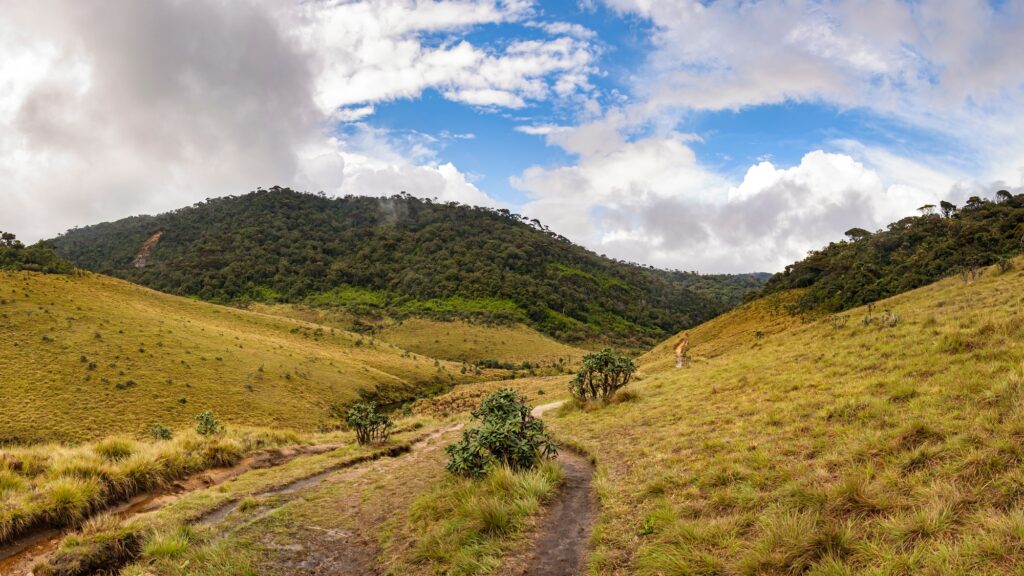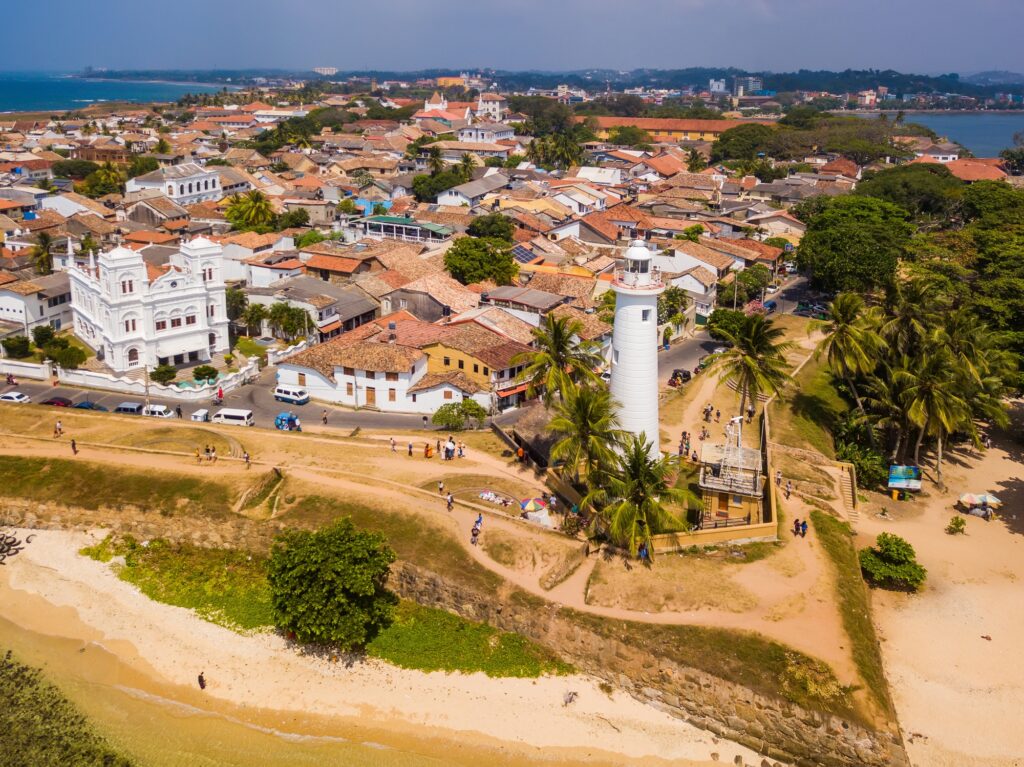A Glimpse into Anuradhapura
Anuradhapura, one of the ancient capital cities of Sri Lanka, stands as a testament to the rich history and cultural legacy of the country. Recognized as a UNESCO World Heritage Site, this sacred city boasts an enduring significance that draws travelers interested in spirituality, history, and architecture. Established in the 4th century BC, Anuradhapura was the center of Sri Lankan civilization for over a millennium, flourishing with political, religious, and economic developments that shaped the region.
The city’s landscape is dotted with remarkable architectural structures that represent ancient Sri Lankan ingenuity. Among the prominent sites are the Sri Maha Bodhi Tree, believed to be the oldest living tree in the world planted from a sapling of the original tree under which Buddha attained enlightenment. Additionally, the Ruwanwelisaya Stupa is an iconic symbol of Anuradhapura, showcasing the historical Buddhist heritage prevalent in ancient Sri Lankan society. This magnificent structure attracts numerous pilgrims and tourists alike, reflecting the spiritual travel interest that pervades the region.
The charm of Anuradhapura lies not just in its revered ancient temples and stupas but also in its ability to transport visitors back in time. The city’s ruins tell stories of kings, monks, and the intricate connections between religion and governance that characterized the ancient cities of Sri Lanka. A visit to Anuradhapura also offers numerous activities filled with cultural significance, presenting an array of things to do in Anuradhapura, from leisurely walks among the historic sites to engaging with local traditions.
Travelers planning an adventure through Sri Lanka’s cultural triangle should consider Anuradhapura as a vital stop. With an understanding of its historical and cultural relevance, one can begin to appreciate what makes this sacred city an integral part of the ancient Sri Lankan itinerary.
The Historical Significance of Anuradhapura
Anuradhapura, situated in the North Central Province of Sri Lanka, stands as one of the most significant ancient cities of Sri Lanka and a vital part of the Sri Lanka cultural triangle. Founded in the 4th century BCE, it served as the capital of the Sinhalese Kingdom for over a millennium and is considered one of the oldest continuously inhabited cities in the world. The city’s establishment marked the dawn of advanced urban settlement in Sri Lanka, showcasing the sophisticated architectural and hydraulic engineering skills of its time.
The historical significance of Anuradhapura is greatly intertwined with its role as a sacred city within the Buddhist tradition. This ancient city is home to several UNESCO sites in Sri Lanka, including the revered Sri Maha Bodhi Tree, believed to be a sapling from the original Bodhi tree under which the Buddha attained enlightenment. The Ruwanwelisaya Stupa, one of the largest stupas in the world, is another remarkable landmark that symbolizes the richness of Sri Lanka’s Buddhist heritage. Together with many ancient temples in Sri Lanka, these structures reflect the city’s prominence as a venerated pilgrimage destination for Buddhists worldwide.
Anuradhapura’s enduring legacy lies in its architectural innovations and its dedication to preserving culture and religion. The city remains a testament to the extraordinary achievements of ancient Sri Lankan civilization, which excelled in agriculture, trade, and governance. The strategic location of Anuradhapura facilitated trade routes between India and other regions, contributing to its prominence. As one explores the historical sites of Anuradhapura, they will uncover relics and ruins that narrate stories of a vibrant past and offer insight into the evolution of Sri Lankan society.
For those considering an exploration of Anuradhapura, understanding its historical significance provides vital context that enriches the experience. Visitors can gain a deeper appreciation of the city’s cultural heritage and its key role in shaping the identity of modern-day Sri Lanka.
Key Attractions: Must-See Sites
Anuradhapura, a prominent landmark within the cultural triangle of Sri Lanka, is renowned for its rich tapestry of ancient history and spiritual significance. Among its many attractions, the Sri Maha Bodhi Tree stands out as a pivotal symbol of the country’s Buddhist heritage. This sacred fig tree is believed to be a sapling of the original tree under which the Buddha attained enlightenment. As one of the oldest trees in documented history, it draws innumerable pilgrims and tourists alike, offering a profound sense of tranquility and reflection.
Another must-see is the Ruwanwelisaya Stupa, an architectural wonder dating back to the 2nd century BC. This colossal stupa, known for its magnificent white dome, is believed to enshrine relics of the Buddha. The intricately carved moonstones and guarding lions at its base add to its splendor, making it not only a site of worship but also a testament to ancient engineering and artistry. Visitors will find the atmosphere enveloping, highlighting the spiritual depth that permeates the ancient cities of Sri Lanka.
The Jetavanaramaya, one of the largest brick structures in the world, is another remarkable attraction in Anuradhapura. Standing at a height of approximately 120 meters, this stupa was built during the reign of King Mahasena and is notable for its unique architecture and historical significance. Nearby, the Isurumuniya
Additionally, the ancient reservoirs of Anuradhapura, such as the **Basawakkulama** and **Kuttam Pokuna**, showcase the engineering prowess of ancient Sri Lanka. These waterworks not only served practical purposes in irrigation but also played a critical role in sustaining the civilization. Each of these historical sites provides an intriguing glimpse into the past and invites travelers to reflect on the enduring legacy of the sacred city of Anuradhapura.
The Sacred Nature of Anuradhapura
Anuradhapura, located in the north-central region of Sri Lanka, is not only an archaeological wonder but also a profound spiritual center. This ancient city, one of the ancient cities of Sri Lanka, holds paramount significance within the Buddhist community. Revered as a sacred city, Anuradhapura offers an insight into the rich cultural and spiritual heritage of Sri Lanka, making it an essential part of any Anuradhapura travel guide.
Visitors to Anuradhapura will find themselves surrounded by several impressive historical sites, including the Sri Maha Bodhi Tree, which is believed to be a sapling from the original fig tree under which the Buddha attained enlightenment. This revered tree is the focal point for many pilgrims who come to pay their respects, often seen offering flowers and lighting incense. Nearby, the magnificent Ruwanwelisaya Stupa, a shining symbol of Sri Lankan Buddhist heritage, draws attention not just for its architecture but also as a relic of faith and devotion.
As with any religious site, engagement with the spiritual atmosphere in Anuradhapura requires an understanding of proper etiquette. Visitors should dress conservatively, removing shoes before entering temple areas, and may consider participating in local rituals, such as offering lotus flowers or engaging in meditation practices. Such interactions not only deepen the experience but also honor the sanctity of these ancient temples in Sri Lanka. Exploring Anuradhapura offers an opportunity for spiritual travel in Sri Lanka, allowing one to connect with the reverence that locals maintain for their past and present.
Best visited during the dry months, the weather in Anuradhapura enhances the experience, allowing one to wander leisurely between sites while soaking in the serene atmosphere. Whether visitors are looking to explore the historical sites or wishing to understand the spiritual significance of Anuradhapura, they will find plenty to marvel at in this UNESCO site that stands as a testament to Sri Lanka’s rich Buddhist history.
When to Visit Anuradhapura
When planning a trip to Anuradhapura, Sri Lanka, understanding the best time to visit can significantly enhance your travel experience. The weather in Anuradhapura is typically divided into two main seasons: the dry season and the monsoon season. The dry season, from May to September, is often considered the ideal time to explore the ancient cities of Sri Lanka, including the sacred city of Anuradhapura, known for its rich Buddhist heritage and historical landmarks.
The temperature during these months tends to fluctuate between 25°C to 35°C (77°F to 95°F), making it comfortable for extensive exploration of Anuradhapura’s historical sites, such as the Ruwanwelisaya Stupa and the Sri Maha Bodhi Tree. Visitors can immerse themselves in the tranquility of the ancient temples Sri Lanka is renowned for, as the dry weather offers ideal conditions for outdoor activities, including wandering through the sprawling ruins and parks.
Travelers should also consider local festivities that occur throughout the year, adding a cultural dimension to the visit. For instance, the Poson Festival, celebrated in June, commemorates the arrival of Buddhism in Sri Lanka. This event transforms Anuradhapura into a vibrant hub of religious activities and parades, providing a unique insight into Sri Lanka’s spiritual travel aspects. Alternatively, planning a visit during the main Buddhist holidays enhances the experience, allowing visitors to witness traditional rituals amidst the backdrop of Anuradhapura’s UNESCO sites in Sri Lanka.
However, the months from October to April experience the northeast monsoon, bringing heavy rainfall which can create challenges for exploring the outdoor attractions. During this time, travelers may face muddy paths and limited visibility, particularly at some of the more remote ancient temples. Hence, it is advisable to review local weather forecasts and travel guides for the best times to visit Anuradhapura based on personal preferences and the travel itinerary.
Getting to Anuradhapura
Anuradhapura, a prominent city in the heart of Sri Lanka, offers travelers a glimpse into the country’s rich Buddhist heritage and ancient history. When planning your visit to this UNESCO site, understanding how to reach Anuradhapura is essential. The city is conveniently located approximately 205 kilometers north of Colombo, Sri Lanka’s capital, making it accessible by various means of transportation.
For those opting for a road trip, the best route is via the A1 highway, which directly connects Colombo to Anuradhapura. The journey typically takes around 4 to 5 hours, depending on traffic conditions. Buses are a popular choice for budget travelers; multiple bus services run regularly from major cities, including Colombo, Kandy, and Negombo. The bus terminal in Colombo is close to the city center, ensuring ease of access. It is advisable to check the schedule in advance, particularly during peak tourist seasons when routes may be busier.
If comfort is a priority, consider using private taxis or ride-sharing services. Such options not only provide convenience but also allow for flexibility in your travel itinerary, enabling spontaneous stops within Sri Lanka’s cultural triangle. Additionally, train travel is an appealing choice for those who enjoy scenic views. However, it should be noted that the nearest train station to Anuradhapura is in the town of Anuradhapura itself, accessible via a short taxi ride from the main railway stations in Colombo or Kandy.
Travelers should be mindful of the best time to visit Anuradhapura, which is typically between November and April, when the weather is pleasant. Planning ahead and understanding transport routes significantly enriches the experience of exploring the sacred city of Anuradhapura, paving the way for an unforgettable journey through the ancient cities of Sri Lanka.
Dress Code and Cultural Etiquette
When visiting Anuradhapura, Sri Lanka, understanding the proper dress code and cultural etiquette is essential to appreciate the region’s rich heritage, particularly around its historical and religious sites. Given that Anuradhapura is home to several significant UNESCO sites in Sri Lanka, including the revered Sri Maha Bodhi tree and the Ruwanwelisaya stupa, specific dress standards must be adhered to in these sacred spaces.
Visitors are expected to dress modestly, which means covering the shoulders and knees. Women should consider wearing long skirts or trousers and blouses with sleeves, while men should opt for long trousers and shirts with at least short sleeves. It is advisable to avoid clothing that is overly tight or revealing, as this may be considered disrespectful in the Sri Lankan culture, especially in places of worship. Furthermore, it is customary to remove footwear before entering temples, thus wearing comfortable sandals or slip-on shoes can make this practice more convenient.
Beyond clothing, adopting appropriate behavior significantly enhances one’s experience while exploring the ancient cities of Sri Lanka. As a visitor in the sacred city of Anuradhapura, maintain a respectful demeanor by observing silence during prayers and refraining from taking photographs in areas where it is prohibited. Engaging with local customs, such as greeting Buddhist monks with a slight bow, is encouraged and helps foster respect for the local culture and traditions.
Being educated about these practices is crucial for those compiling an Anuradhapura travel guide. Considering these cultural norms will enrich one’s visit, making it more fulfilling while showcasing the deep-seated spiritual heritage of Sri Lanka. Keeping these guidelines in mind will undoubtedly lead to a more respectful and enjoyable exploration of this remarkable destination.
The Local Vibe: Pace and Spirituality
Anuradhapura, Sri Lanka, is renowned not only for its historic significance but also for its unique local vibe that exudes tranquility and spirituality. As one wanders through the ancient cities of Sri Lanka, the slower pace of life in Anuradhapura becomes evident, offering a stark contrast to the bustling urban centers found elsewhere on the island. This serene environment fosters a deep connection with nature and heritage, making it a spiritual haven for visitors and locals alike.
The presence of significant religious sites, such as the revered Sri Maha Bodhi Tree and the monumental Ruwanwelisaya Stupa, reinforces the spiritual atmosphere of the sacred city of Anuradhapura. These UNESCO sites in Sri Lanka are not merely tourist attractions, but sacred spaces where devotees gather to engage in prayer and reflection. The harmonious blend of nature and spirituality can be felt throughout the ancient temples of Sri Lanka, where the serene surroundings encourage mindfulness and peace.
Why You Should Include Anuradhapura in Your Itinerary
Anuradhapura, a prominent city in the tapestry of ancient cities of Sri Lanka, stands as a beacon of cultural and historical significance. It is not merely a travel destination; it is a repository of the nation’s rich heritage, showcasing ancient Sri Lanka’s architectural brilliance and spiritual depth. For travelers seeking both enlightenment and exploration, visiting Anuradhapura is an experience that must be integrated into their itinerary.
The city is home to remarkable UNESCO sites in Sri Lanka, such as the revered Sri Maha Bodhi Tree, believed to be a sapling of the sacred tree under which Buddha attained enlightenment. This living symbol of Sri Lanka’s Buddhist heritage sets the tone for a meditation space that allows visitors to connect with their spirituality in a serene atmosphere. Additionally, the Ruwanwelisaya Stupa, one of the largest stupas in the world, captivates with its majestic presence and intricate history. These ancient temples in Sri Lanka serve as a fitting introduction to the nation’s deep-rooted traditions and religious customs.
During your visit to Anuradhapura, you will find a plethora of things to do, from immersing yourself in the historical narratives embedded within Anuradhapura travel guides to enjoying the vibrant local culture. The city’s importance extends to its role as part of the Sri Lanka Cultural Triangle, making it a fundamental stop on an ancient Sri Lanka itinerary. Travelers will appreciate the scenic beauty of the landscapes surrounding these historical sites while understanding the stories that shaped the country.
In conclusion, including Anuradhapura in your travel plans offers invaluable insights into Sri Lanka’s spiritual and historical heritage. Whether you are drawn by its ancient temples, breathtaking stupas, or the overall aura of tranquility in the sacred city of Anuradhapura, this destination promises to enrich your journey through the heart of Sri Lanka.





